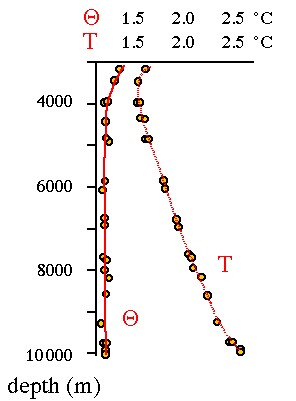- controls rates of chemical reactions
-
controls
rates of biological processes (Q10: ratio of metabolic processes at 10°C
difference; mostly close to 2)
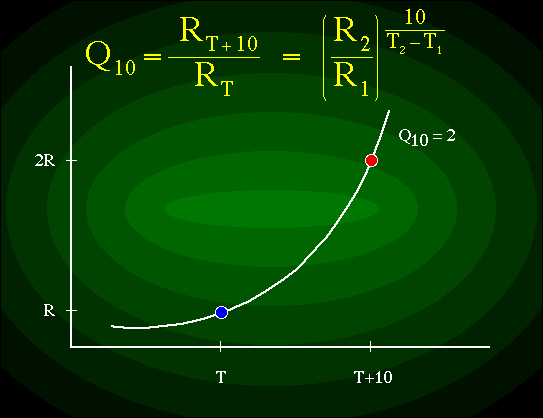
- with salinity determine water density (which controls vertical water move- ment, currents, stability/mixing)
- determines concentration of dissolved gases in water (decrease of gas solubility with increasing temperature)
- sets limits to species’ distribution:
- eurytherm: wide temp. range
- stenotherm: narrow temp. range
- poikilotherm: body temperature = water temperature
- stenotherm: body temperature constant and controlled
- Tropical: 25 °C
- Subtropical: 15 °C
- Temperate: 5 °C (northern limit) 2 °C (southern limit)
- Polar: <0-2 °C or 5 °C
- When water sinks to greater depth, it becomes warmer
- As pressure increases with depth, water is compressed
- Compression exerts work (in physical meaning) on water
- This “work” or energy is converted to heat, which increases the water temperature – adiabatic process = no exchange of heat
- Heating is small but noticeable (ca. 0.1 °C / 1000 m depth)
- Potential Temperature is written QT (“Theta T”)
- Only important at depths >1000 m
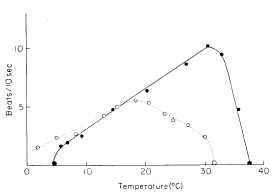
Cirral activity of upper (solid) & lower (dashed) intertidal barnacle species; note that the upper intertidal species has a much wider temperature range it tolerates because it has to cope with high air temperature fluctuations when exposed during low tide.
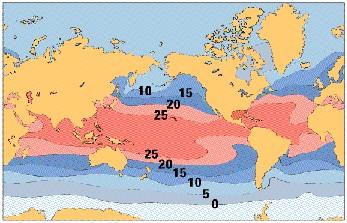
Temperature
Profiles: Seasonal Development of the Thermocline
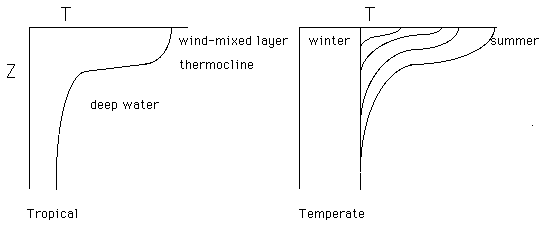
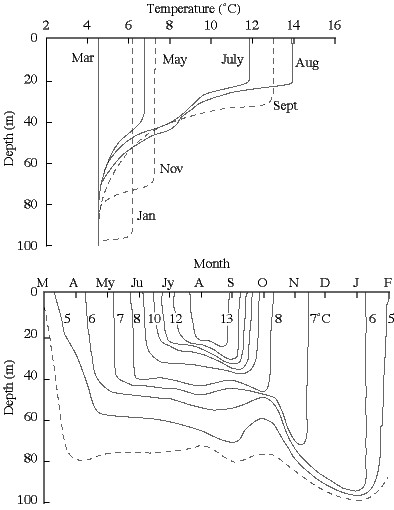
Potential Temperature
